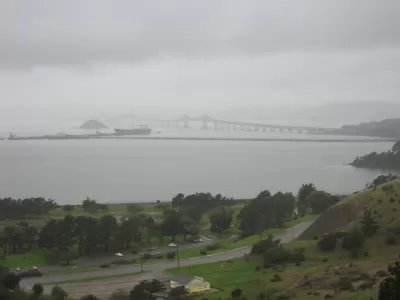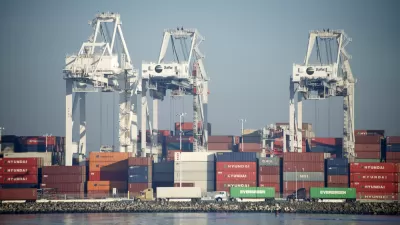Can freight trains and a scenic shoreline park along San Francisco Bay coexist, or are they incompatible uses? The East Bay Regional Park District voted to remove old rail tracks that BNSF Railway wants to reactivate. A local court may decide.

Cabanatuan provides the historical context of the rail line and the city of Richmond.
BNSF Railway’s predecessor, the Atchison, Topeka and Santa Fe Railway, brought Richmond to life in 1900 when it located its western terminus there. The railroad built a large rail yard near what became Point Richmond and a tunnel and tracks to Ferry Point on the shoreline, where passenger trains rolled onto barges to San Francisco and freight trains were taken to other bay ports.
When the park district bought the right of way in 1991 via eminent domain, the railroad was granted an easement to run trains to two industrial sites, both of which are now defunct.
What's not mentioned in any local or regional media coverage of the controversy is the vital role that rail plays in goods movement, not just from an economic but also an air quality perspective as well, even when the trains are being pulled by diesel-powered locomotives.
"[O]ne rail car can haul as much as four tractor-trailer trucks," according to a recent New York Times article (posted here) about a $100 million effort led by the New York City Economic Development Corporation to invest in local freight rail infrastructure so as to reduce truck traffic and emissions.
FULL STORY: Train tussle: Campaign fights plan for ‘wall of railcars’ on Richmond shoreline

Planetizen Federal Action Tracker
A weekly monitor of how Trump’s orders and actions are impacting planners and planning in America.

Congressman Proposes Bill to Rename DC Metro “Trump Train”
The Make Autorail Great Again Act would withhold federal funding to the system until the Washington Metropolitan Area Transit Authority (WMATA), rebrands as the Washington Metropolitan Authority for Greater Access (WMAGA).

The Simple Legislative Tool Transforming Vacant Downtowns
In California, Michigan and Georgia, an easy win is bringing dollars — and delight — back to city centers.

The States Losing Rural Delivery Rooms at an Alarming Pace
In some states, as few as 9% of rural hospitals still deliver babies. As a result, rising pre-term births, no adequate pre-term care and harrowing close calls are a growing reality.

The Small South Asian Republic Going all in on EVs
Thanks to one simple policy change less than five years ago, 65% of new cars in this Himalayan country are now electric.

DC Backpedals on Bike Lane Protection, Swaps Barriers for Paint
Citing aesthetic concerns, the city is removing the concrete barriers and flexposts that once separated Arizona Avenue cyclists from motor vehicles.
Urban Design for Planners 1: Software Tools
This six-course series explores essential urban design concepts using open source software and equips planners with the tools they need to participate fully in the urban design process.
Planning for Universal Design
Learn the tools for implementing Universal Design in planning regulations.
Smith Gee Studio
City of Charlotte
City of Camden Redevelopment Agency
City of Astoria
Transportation Research & Education Center (TREC) at Portland State University
US High Speed Rail Association
City of Camden Redevelopment Agency
Municipality of Princeton (NJ)





























